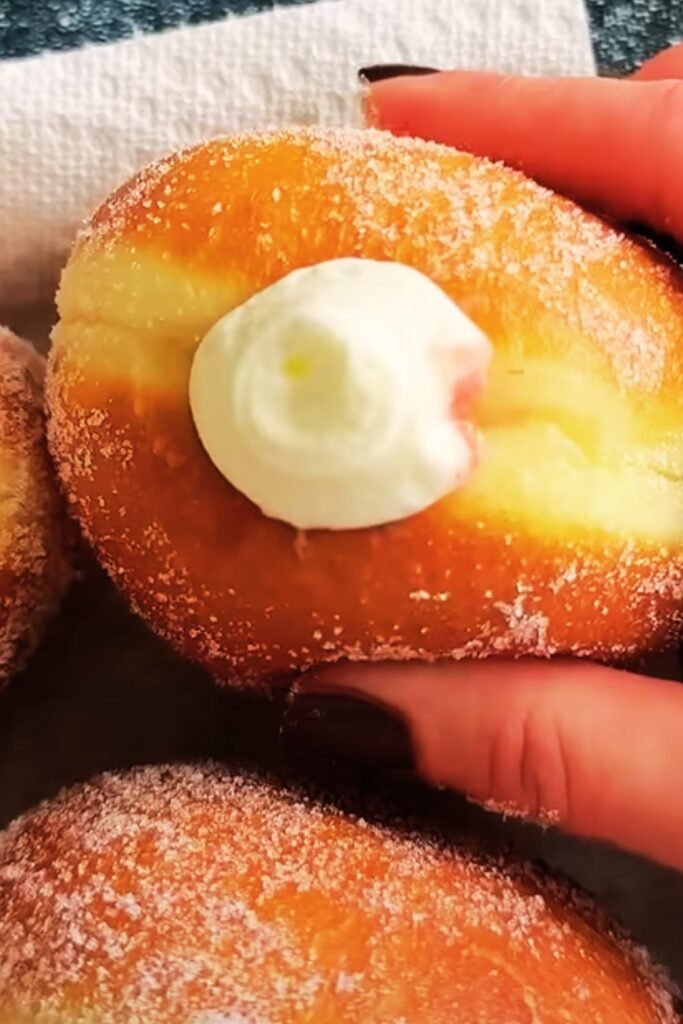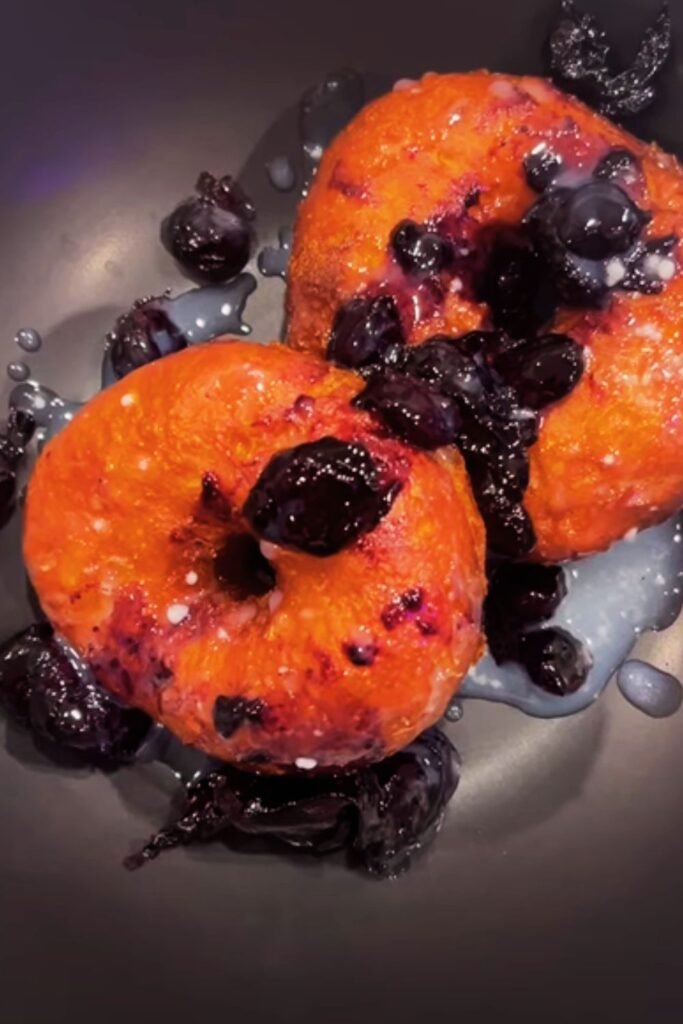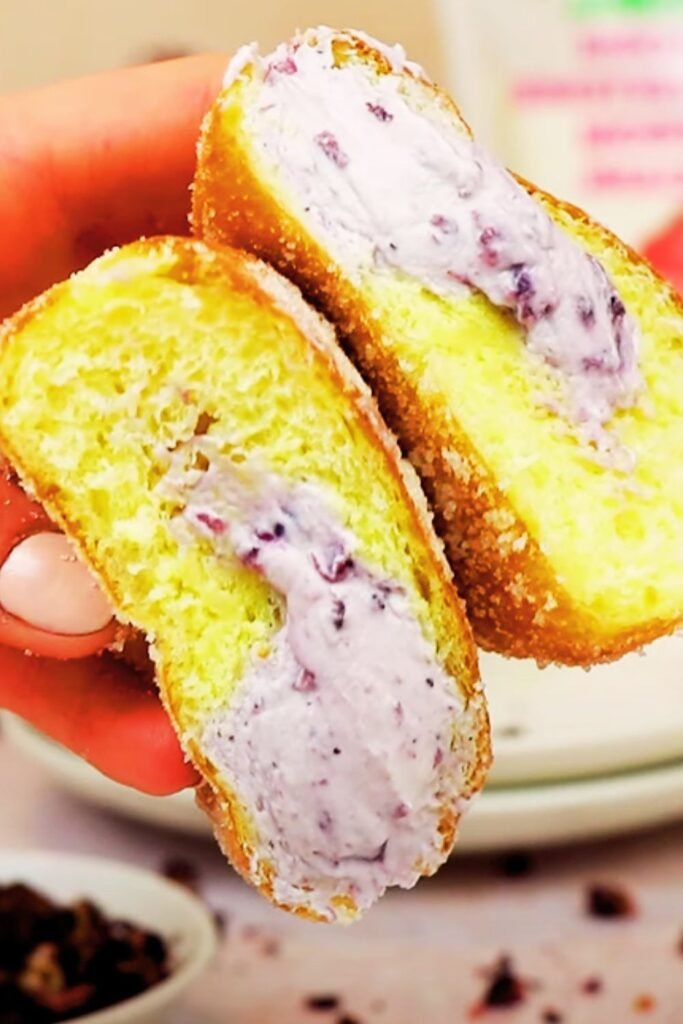The moment I first encountered matcha crinkle cookies, I knew I’d discovered something magical. These emerald-hued treats combine the sophisticated, earthy flavor of premium Japanese matcha with the beloved texture of classic American crinkle cookies. The result? A dessert that’s both familiar and exotic, comforting yet refined.
My journey with matcha began during a trip to Kyoto, where I fell in love with the complex, slightly bitter taste that dances on your tongue. When I returned home, I couldn’t stop thinking about how to incorporate this incredible ingredient into my baking repertoire. After countless experiments in my kitchen, these matcha crinkle cookies emerged as my crowning achievement.
What makes these cookies truly special isn’t just their stunning appearance – though that vibrant green color dusted with powdered sugar creates an absolutely Instagram-worthy moment. It’s the way the buttery, tender crumb melts in your mouth while delivering that distinctive matcha flavor that starts grassy and vegetal, then transitions into something almost sweet and nutty.
Understanding Matcha: The Heart of These Cookies
Matcha: Finely ground powder made from specially grown and processed green tea leaves, traditionally used in Japanese tea ceremonies.
Ceremonial Grade: The highest quality matcha, perfect for drinking and premium baking applications.
Culinary Grade: A more affordable option specifically designed for cooking and baking, with a slightly more robust flavor.
Umami: The fifth taste, often described as savory or meaty, which matcha possesses alongside its vegetal notes.
The quality of your matcha will make or break these cookies. I’ve learned this lesson the hard way after using cheap matcha powder that resulted in dull, bitter cookies with an unappetizing brownish-green color. Premium matcha should be vibrant green, almost fluorescent, and smell fresh and grassy – never musty or stale.
Comparison of high-quality vs. low-quality matcha powder

Essential Ingredients and Their Roles
| Ingredient | Purpose | Quality Tips | Substitution Notes |
|---|---|---|---|
| Matcha Powder | Primary flavor and color | Use ceremonial or high-quality culinary grade | No direct substitute – green food coloring won’t provide flavor |
| Butter | Richness and texture | European-style preferred for higher fat content | Can use vegetable shortening, but flavor will be less rich |
| Brown Sugar | Moisture and caramel notes | Light brown sugar works best | Can substitute with coconut sugar for deeper flavor |
| White Sugar | Structure and sweetness | Fine granulated preferred | Caster sugar can be substituted |
| Eggs | Binding and structure | Room temperature for better incorporation | Each egg can be replaced with 1/4 cup applesauce |
| Flour | Structure and chewiness | All-purpose works perfectly | Can substitute with gluten-free 1:1 flour blend |
| Powdered Sugar | Coating and visual appeal | Sift for smoothest coating | Essential – no good substitute |
The Science Behind Perfect Crinkles
The signature crinkled appearance comes from a fascinating chemical reaction. When the cookie dough balls, coated in powdered sugar, hit the hot oven, the exterior begins to set while the interior continues to expand. This creates those beautiful cracks that expose the darker cookie underneath, creating a stunning contrast against the white powdered sugar coating.
Temperature control is absolutely crucial here. My oven runs hot, so I’ve learned to bake these at 340°F instead of the traditional 350°F. Every oven is different, and I encourage you to get to know yours intimately. The cookies should look slightly underbaked when you remove them – they’ll continue cooking on the hot pan for a few minutes.
Step-by-Step Recipe
Ingredients:
- 2 1/4 cups all-purpose flour
- 3 tablespoons high-quality matcha powder
- 1 teaspoon baking soda
- 1/2 teaspoon salt
- 1 cup unsalted butter, softened
- 3/4 cup light brown sugar, packed
- 1/2 cup granulated sugar
- 2 large eggs, room temperature
- 2 teaspoons vanilla extract
- 1 cup powdered sugar for rolling
Instructions:
Preparation Phase: I always start by bringing my eggs to room temperature – this takes about 30 minutes on the counter. Cold eggs don’t incorporate as smoothly, leading to a less uniform texture. While they’re warming up, I sift my matcha powder. This step is non-negotiable because matcha clumps easily, and you don’t want bitter pockets of concentrated powder in your cookies.
Mixing the Dry Ingredients: In a medium bowl, I whisk together the flour, sifted matcha powder, baking soda, and salt. The key here is thorough mixing – I spend a full minute whisking to ensure the matcha is evenly distributed throughout the flour. This prevents streaky cookies and ensures every bite has that perfect matcha flavor.
Creaming Process: Using my stand mixer fitted with the paddle attachment, I cream the softened butter with both sugars for about 4 minutes on medium speed. The mixture should be light, fluffy, and pale green. Don’t rush this step – proper creaming incorporates air, which contributes to the cookie’s tender texture.
Adding Wet Ingredients: I add the eggs one at a time, beating well after each addition, followed by the vanilla extract. The mixture might look slightly curdled at this point, but don’t worry – it’ll come together once you add the flour.
Final Assembly: With the mixer on low speed, I gradually add the flour mixture, mixing just until combined. Overmixing develops the gluten, resulting in tough cookies. The dough should be soft and slightly sticky.
Properly mixed matcha cookie dough

Chilling Phase: I wrap the dough in plastic wrap and refrigerate for at least 2 hours, though overnight is even better. This chilling period serves multiple purposes: it firms up the butter, making the dough easier to handle, and allows the matcha flavor to develop and meld with the other ingredients.
Shaping and Coating: Using a cookie scoop or my hands, I roll the chilled dough into 1.5-inch balls. Each ball gets rolled generously in powdered sugar – don’t be shy here. The more powdered sugar, the more dramatic the crinkle effect.
Baking: I place the coated dough balls on parchment-lined baking sheets, spacing them about 2 inches apart. Into a preheated 340°F oven they go for 10-12 minutes. The cookies are done when the edges are set but the centers still look slightly soft and underbaked.
Troubleshooting Common Issues
| Problem | Cause | Solution |
|---|---|---|
| Cookies spread too much | Butter too warm, insufficient chilling | Chill dough longer, check oven temperature |
| Minimal cracking | Oven too cool, not enough powdered sugar | Increase temperature by 10°F, coat more generously |
| Bitter flavor | Low-quality matcha, too much matcha | Invest in better matcha, reduce amount slightly |
| Pale color | Insufficient matcha, overmixing | Use more matcha, mix gently |
| Tough texture | Overmixing, overbaking | Mix just until combined, underbake slightly |
Variations and Flavor Combinations
My basic recipe serves as a canvas for creativity. I’ve experimented with numerous variations over the years:
White Chocolate Matcha: I fold in 1 cup of white chocolate chips before chilling. The sweetness complements matcha’s earthiness beautifully.
Matcha Almond: Adding 1/2 teaspoon almond extract and 1/2 cup chopped almonds creates a sophisticated flavor profile.
Double Matcha: For true matcha enthusiasts, I sometimes add an extra tablespoon of matcha powder and include matcha white chocolate chips.
Coconut Matcha: Toasted coconut flakes add textural interest and a tropical note that pairs surprisingly well with matcha.
Different matcha cookie variations on display

Storage and Serving Suggestions
Fresh matcha crinkle cookies should be stored in an airtight container at room temperature for up to one week. I often place a slice of bread in the container to help maintain moisture – just remember to replace it every few days.
For longer storage, these cookies freeze beautifully for up to three months. I wrap them individually in plastic wrap, then place them in a freezer bag. When I want to serve them, I let them thaw at room temperature for about 30 minutes.
The flavor of these cookies actually improves after a day or two, as the matcha has more time to meld with the other ingredients. I often make them a day ahead when I’m planning to serve them to guests.
Nutritional Information and Considerations
| Nutrient | Per Cookie (24 cookies total) | Daily Value % |
|---|---|---|
| Calories | 165 | 8% |
| Total Fat | 7g | 9% |
| Saturated Fat | 4g | 20% |
| Cholesterol | 25mg | 8% |
| Sodium | 110mg | 5% |
| Total Carbs | 25g | 9% |
| Dietary Fiber | 1g | 4% |
| Sugars | 14g | – |
| Protein | 3g | 6% |
| Caffeine | 15mg | – |
It’s worth noting that matcha contains caffeine – about 15mg per cookie. While this is significantly less than a cup of coffee (which contains 95mg), it’s something to consider if you’re sensitive to caffeine or serving these cookies in the evening.
Cultural Significance and Modern Applications
Matcha has been central to Japanese culture for over 800 years, originally brought to Japan by Buddhist monks who used it in meditation practices. The traditional tea ceremony, or chanoyu, elevates matcha preparation to an art form emphasizing mindfulness, respect, and harmony.
In modern baking, matcha has become incredibly popular, especially in fusion desserts that blend Eastern and Western traditions. These crinkle cookies represent this beautiful marriage – taking an American cookie format and infusing it with Japanese flavors and aesthetics.
I find there’s something meditative about making these cookies, from the careful sifting of the matcha to the gentle rolling in powdered sugar. It connects me to that centuries-old tradition of mindful preparation, even in my contemporary home kitchen.
Professional Tips from My Kitchen
After making hundreds of batches of these cookies, I’ve discovered several professional secrets:
Temperature Matters: I use an oven thermometer because most home ovens run hot or cold. Consistency is key for perfect crinkles.
Sifting is Essential: I always sift my matcha powder, even if the package claims it’s already sifted. Clumps are the enemy of smooth, evenly flavored cookies.
Size Consistency: I use a #40 cookie scoop to ensure uniform size. Consistent sizing means even baking.
The Wiggle Test: My cookies are done when the edges are set but the centers still wiggle slightly when I gently shake the pan.
Cooling Patience: I let the cookies cool on the baking sheet for 5 minutes before transferring them to a wire rack. This prevents breakage and allows them to finish cooking gently.
Pairing and Presentation Ideas
These cookies shine in various settings. For afternoon tea, I serve them alongside delicate finger sandwiches and traditional Japanese sweets. The color contrast is stunning, and the flavors complement rather than compete.
During holidays, I package them in clear cellophane bags tied with ribbon – they make gorgeous gifts. The vibrant green color feels festive and unique compared to typical brown cookies.
For dinner parties, I sometimes serve them with vanilla ice cream or a light lemon sorbet. The temperature contrast and the way the cold dessert mellows the matcha’s intensity creates a memorable ending to a meal.
Questions and Answers
Q. Can I make these cookies without a stand mixer? Absolutely! I’ve made them successfully with a hand mixer, though the creaming process takes a bit longer. You can even make them by hand – just be prepared for a good arm workout during the creaming stage.
Q. Why do my cookies sometimes come out brown instead of green? This usually indicates either low-quality matcha or overbaking. High-quality matcha maintains its color better under heat. Also, check your oven temperature – too high heat can cause the matcha to brown.
Q. Can I reduce the sugar in this recipe? I don’t recommend reducing the sugar significantly as it affects both texture and the crinkle formation. However, you can substitute up to half the white sugar with a sugar alternative like erythritol if needed.
Q. How can I make these cookies vegan? Replace the butter with vegan butter (I prefer the stick form, not tub), and substitute each egg with 1/4 cup of applesauce or a commercial egg replacer. The texture will be slightly different but still delicious.
Q. Can I use matcha latte powder instead of pure matcha? No, matcha latte powders contain added sugars and milk powders that will throw off the recipe’s balance. Stick with pure matcha powder for best results.
Q. Why didn’t my cookies crinkle properly? Several factors can affect crinkle formation: insufficient powdered sugar coating, oven temperature too low, or dough not chilled enough. Make sure you’re generous with the powdered sugar and that your oven is properly preheated.
Q. How long does matcha powder last, and how should I store it? Unopened matcha can last up to two years stored in a cool, dark place. Once opened, I keep mine in an airtight container in the refrigerator and use it within six months for best flavor and color.
Q. Can I freeze the cookie dough? Yes! I often shape the dough into balls, roll them in powdered sugar, and freeze them on a baking sheet. Once frozen, I transfer them to freezer bags. They can be baked directly from frozen – just add an extra minute or two to the baking time.
The beauty of these matcha crinkle cookies lies not just in their striking appearance or unique flavor, but in how they represent the wonderful possibilities that emerge when we embrace culinary fusion. Every time I make them, I’m reminded of how food can bridge cultures and create new traditions while honoring old ones.
Whether you’re a matcha novice or a devoted enthusiast, these cookies offer a perfect introduction to baking with this remarkable ingredient. Take your time, use quality ingredients, and don’t be afraid to make them your own through small adjustments and personal touches. Happy baking!